Are More Food Shortages Coming? How To Be Prepared
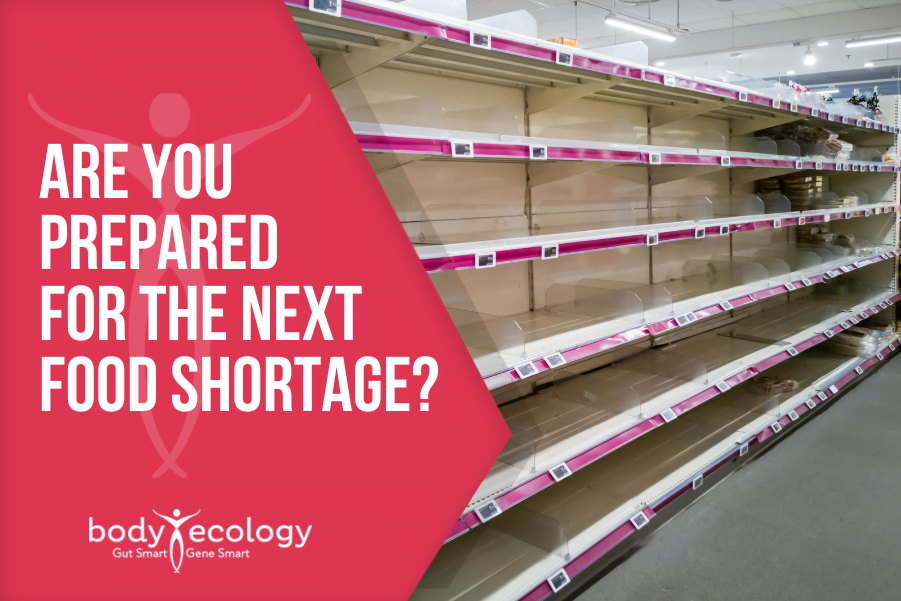
The recent baby formula shortage has been a real scare for parents. Especially those that rely exclusively on formula to feed their babies. And that’s a lot of parents. According to the CDC Breastfeeding Report Card, just 25% of babies are exclusively breastfed at 6 months of age.¹ That means that the vast majority of the nearly 3.7 million babies born each year may be facing food insecurity in their first year of life.
While it’s easy to blame the shortage on the global supply chain crisis, the reality is that the U.S. relied too heavily on a single formula manufacturer: Abbot. Because Abbot held such a huge portion of the formula market share, when the manufacturer issued a widespread recall in February, the crunch was felt on every grocery store shelf across the country.
It has been a hard lesson to learn, especially for parents scrambling to figure out how to feed their babies. But it’s an important lesson that we need to apply to all of our food sources.
Are you prepared for the next food shortage? If not, here’s how you can start preparing.
Learn How To Grow Vegetables
Fresh produce is already skyrocketing in price thanks to all-time high inflation levels, and the cost of ‘food at home’ (grocery store) produce is expected to rise an additional 7-8% in 2022.² But what if certain items simply start to vanish from store shelves? A loss of fresh vegetables could be detrimental to the overall health of Americans.
It’s more important than ever that people learn to grow their own veggies and become less reliant on grocery stores.
Fortunately, there are many gardening methods that make it possible to grow your own food even in very small spaces.
Container Gardening – For small spaces – even apartment balconies! – container gardening is the way to go. You can grow just about any vegetable in a 5 gallon container—from lettuce to root vegetables and fresh herbs in smaller containers. It’s a time saver too as containers of all sizes can significantly cut down on those tedious gardening chores. Stack containers up on metal racks, plant stands or shelves that are staggered like a ladder and your garden containers will be easier on your back. Buckets and growing containers can be purchased at Lowe’s, Home Depot and many garden and hardware stores.
Square Foot Gardening – The Square Foot Gardening method is estimated to cost 50% less, uses 20% less space, 10% of the water, and only 2% of the work compared to single row gardening. It enables you to get maximum yield from every 12″x12″ plot of soil you can use.
Hydroponic Gardening – Another great gardening method for small spaces, a hydroponic system is a simple and affordable way to start growing veggies. Most people assume you have to invest in air pumps and build a complicated hydro system, but the Kratky method is a ‘passive’ hydroponic system that requires no electricity.
Shipping Container Gardening – If you have a large yard, shipping containers converted into grow houses allow you to grow veggies indoors, year round. While it might not be practical for a standard suburban backyard, shipping container gardening would be the perfect solution for neighborhood or community gardening — especially in cooler climates with a short growing season.
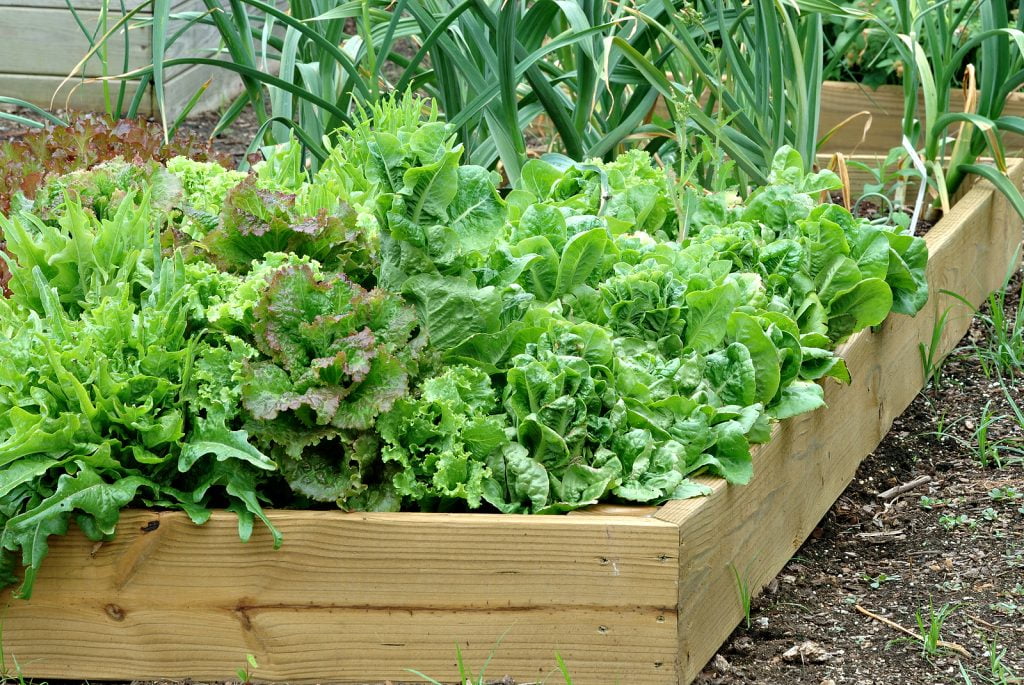
What To Grow
When deciding what vegetables to grow, the short answer is to grow veggies that you love and that your body needs. If you have a very small space, you will likely eat everything fresh. But if you are able to grow a surplus, consider the types of food that can be canned, frozen, or better yet, fermented.
Examples of vegetables that are good for canning are carrots, daikon, turnips, green beans and squashes. If you have freezer space, veggies that freeze well are corn, peas, broccoli, onions and winter greens like kale, turnip greens, and collards.
Learn How To Ferment Vegetables
Fermentation is the oldest form of preserving food. Not only is it an easy way to preserve your surplus veggies, but there are numerous health benefits of eating fermented vegetables. And let’s be real, they’re far more delicious than mushy canned veggies! Research shows that in areas of the world where people enjoyed fermented vegetables, the rate of Covid was very low and there were no deaths. If they chose to be vaccinated they had a better response to the vaccine.⁵
Fermented foods contain beneficial bacteria that are important for gut health.
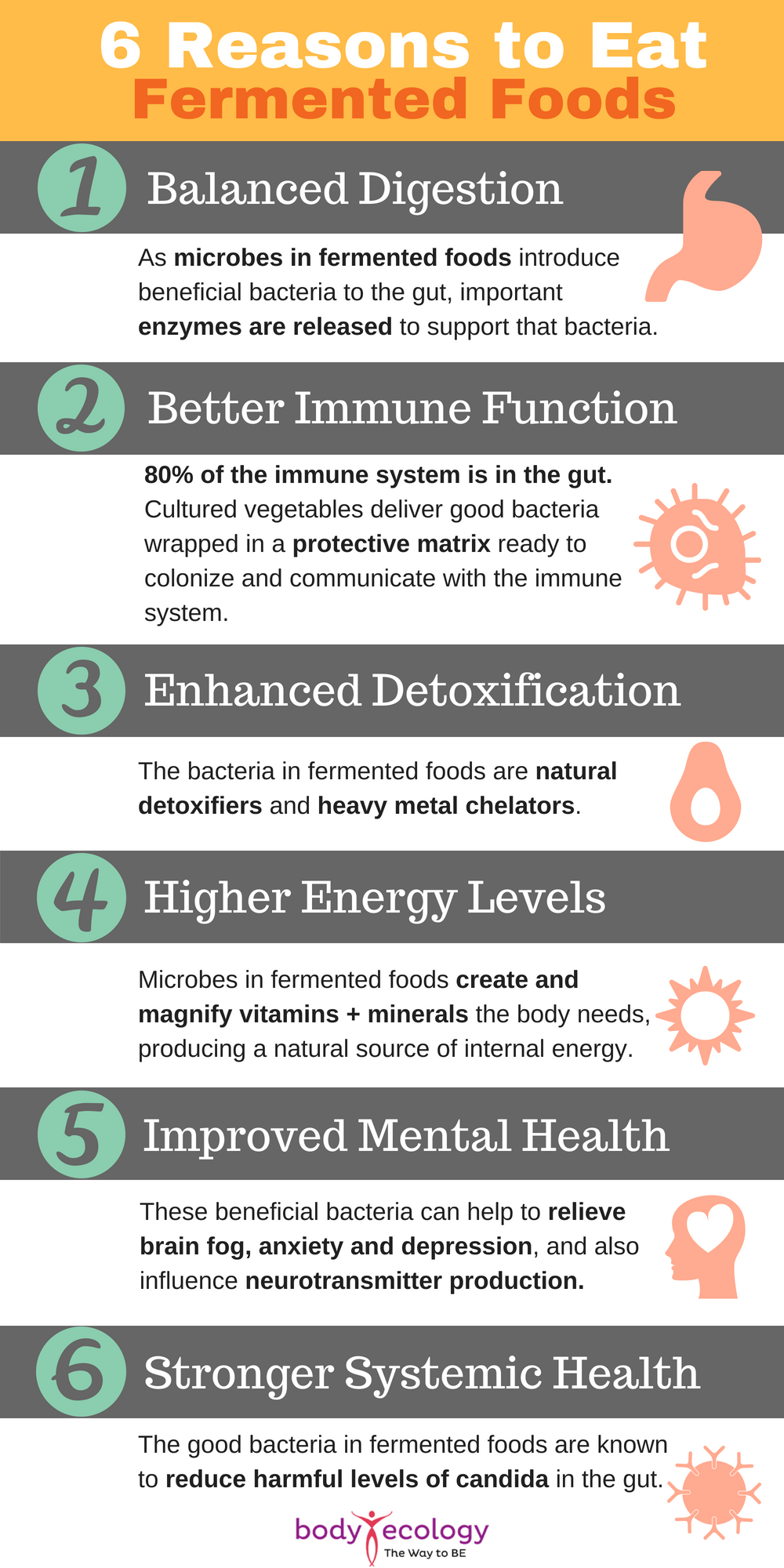
Fermented Veggie Recipe
If you’re new to making cultured vegetables (and gardening!), carrots and cabbage are easy veggies to grow. Beets are also easy to grow, and while they do contain oxalates, they become low oxalate when fermented. Ginger can be grown in a container garden as well and it goes great in many fermented food recipes. Here’s a link to growing garlic in a container as well. Best of all, it’s EASY to make your own fermented food at home using Body Ecology’s Cultured Veggie Kit.
Try this recipe:
3 heads green cabbage, shredded in a food processor
6 carrots, large, shredded in a food processor
3 inch piece ginger, peeled and chopped
6 cloves garlic, peeled and chopped
To make cultured vegetables:
Combine all ingredients in a large bowl.
Remove several cups of this mixture and put into a blender.
Add enough filtered water to make a “brine” the consistency of a thick juice. Blend well and then add brine back into first mixture. Stir well.
Pack mixture down into a 11⁄2-quart glass or stainless steel container. Use your fist, a wooden dowel, or a potato masher to pack veggies tightly.
Fill container almost full, but leave about 2 inches of room at the top for veggies to expand.
Roll up several cabbage leaves into a tight “log” and place them on top to fill the remaining 2-inch space.
Clamp jar closed.
Let veggies sit at about a 70° room temperature for at least three days. A week is even better. Refrigerate to slow down fermentation. Enjoy!
To use Body Ecology’s Culture Starter:
Dissolve one or two packages of starter culture in 11⁄2-cup warm (90°) water. Add approximately 1 tsp. of some form of sugar to feed the starter (try Rapadura, Sucanat, honey, Agave, or EcoBloom). Let starter/sugar mixture sit for about 20 minutes or longer while the L. Plantarum and other bacteria wake up and begin enjoying the sugar. Add this starter culture to the brine (step 3).
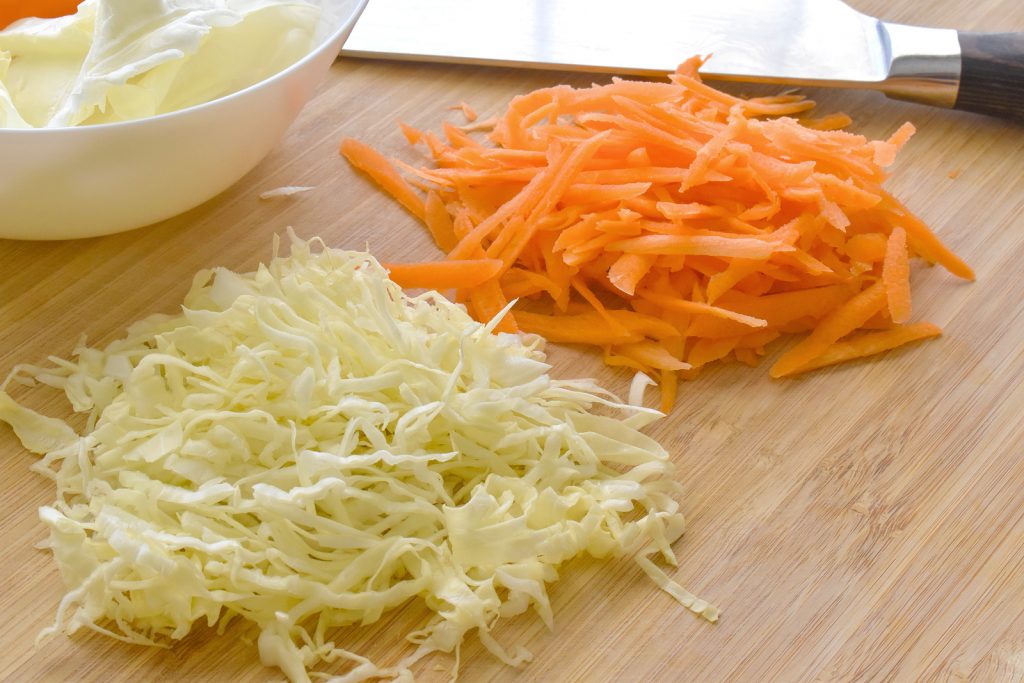
Stock Up On Canned Foods
But DON’T panic buy! As people who live in hurricane and blizzard prone areas can attest, there’s nothing more frustrating than finding empty supermarket shelves when a storm approaches.
Everyone should have an adequate supply of non-perishable and essential items on hand, plus an emergency kit, to last several days in the wake of a storm. If we’re thinking about preparing for future food shortages, the ideal solution is to slowly stock up on these items as you find them on sale.
Good products to stock up on include:
- Canned tuna – Vital Choice is small tuna that is high in omega 3 and low in mercury
- Canned salmon
- Mayo and salad dressing – Primal Kitchen and Chosen Foods are products with healthier avocado oil
- Canned beans – Eden brand black eyed peas, chickpeas and lentils are the best canned bean because they are low in oxalates.
- Canned veggies – Whatever your family likes to eat
- Whole Grains – Sprouted brown rice from Tru Roots, Sprouted Basmati rice from Lundberg, millet, and quinoa all have long shelf lives.
- Gluten free oats are on the low FODMAP list.
- Dried mushrooms
- Boxed chicken or vegetable stock
- Canned coconut milk
- Protein powders and shakes – Body Ecology shakes have protein, probiotics, and other ingredients to nourish your gut and support your immune system.
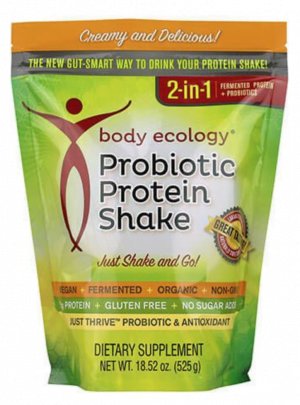
Whether you’re prepping for a food shortage or storm, or you just want a ready-to-go meal replacement, our Body Ecology Probiotic Protein Shake is a great product to keep on hand.
Some Food Shortages Are Already Here
We are already feeling the shortage crunch from wheat that comes from Ukraine, Russia, and India as food prices skyrocket around the globe.⁴ India, the world’s largest producer of sugar, has recently begun restricting exports, which will further drive up the price and make these items more difficult to get.³
If you’re already a devoted follower of the Body Ecology system of health and healing, you likely haven’t even heard of these shortages! If your baking obsession is costing you an arm and leg these days, now is a great time to make the switch to healthy alternatives to sugar, like Body Ecology BE Sweet, and ditch wheat products altogether.
What To Remember About This Article
-
We need to learn from the baby formula shortage and prepare for future food shortages
-
Learn to grow your own veggies
-
Know what veggies can and freeze well
-
Learn how to ferment veggies – and why you should be eating them!
-
Know what canned goods to (responsibly) stock up on
-
Understand that some food shortages are already here and food prices are rising








